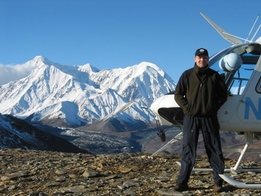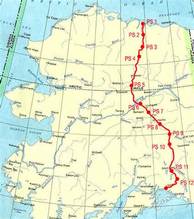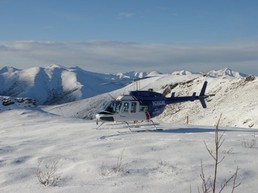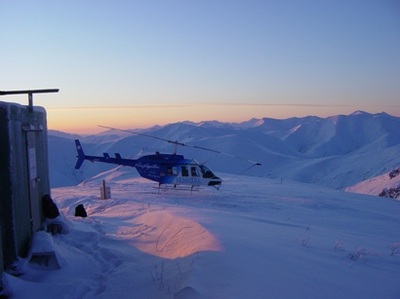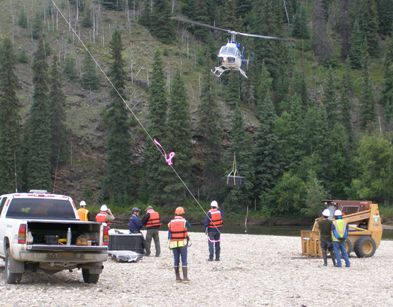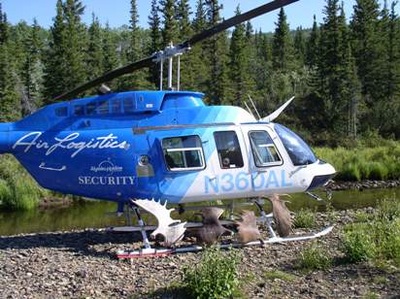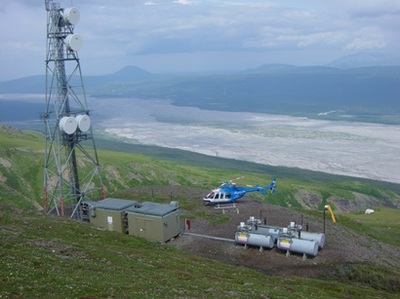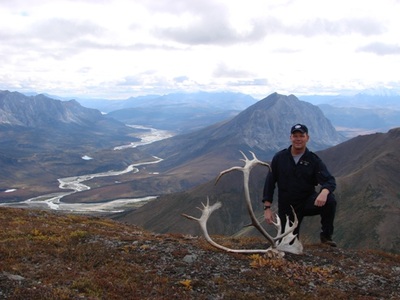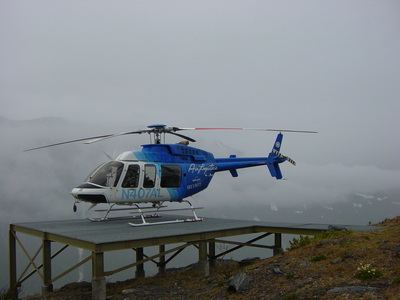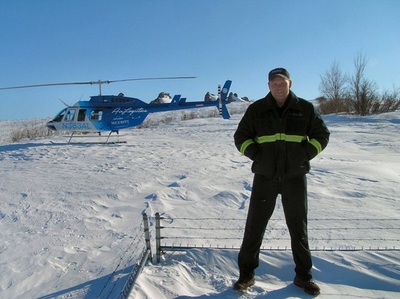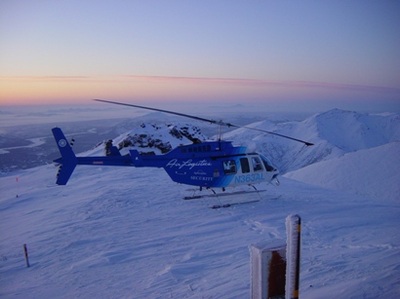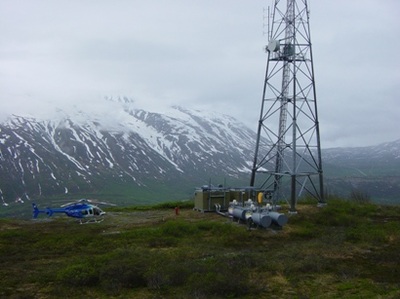The author began his civilian flying career with Air Logistics of Alaska. Based in Fairbanks, the company's primary contract was flying in support of the 800-mile Alyeska Pipeline. The contract provided daily security flights out of Metro Field, and additional flights by helicopters based at four of the twelve pipeline pump stations and the Valdez terminal. Other company contracts supported North Slope oil companies, local, state and federal agencies, and private charters.
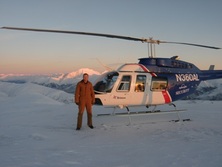
Air Logistics of Alaska was initially a subsidiary of Offshore Logistics, based in Louisiana. The company was later purchased by Bristow Group, with the Alaska operation renamed Bristow Alaska. Bristow never fully supported the Alaska division and completely shut down operations a few years later, selling off or moving their assets to the Gulf of Mexico. Maritime Helicopters out of Homer, Alaska is currently flying the Alyeska Pipeline Contract.
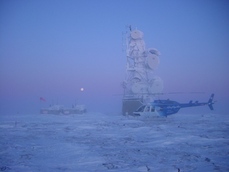
Security flights with Air Logistics of Alaska were initially flown in Bell 206Bs, then Bell 206L3s and later Bell 407s. Other aircraft in the company included a Bell 212, Bell 412s, BK105s and a Cessna 207. With the exception of aircraft in Valdez, Alyeska, pipeline contract flights were flown with either
the Bell 206 or 407. The main maintenance facility was at Metro Field, but each pump station aircraft had its own hangar and assigned mechanic, as did most other annual contracts. Seasonal contracts during the summer were often at remote field locations where enclosed hangar facilities were not available.
the Bell 206 or 407. The main maintenance facility was at Metro Field, but each pump station aircraft had its own hangar and assigned mechanic, as did most other annual contracts. Seasonal contracts during the summer were often at remote field locations where enclosed hangar facilities were not available.
Greg was one of the security pilots on the Alyeska Pipeline Contract for seven years, although occasionally flying missions in support of other company contracts. After moving to Idaho, Greg continued flying in Alaska, commuting back and forth as his schedule dictated. He first flew out of Pump Station 5, located between Fairbanks and the North Slope, then the Gulkana Response Base located between Fairbanks and Valdez, and finally back to Pump Station 5.
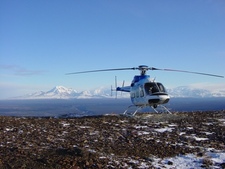
Work shifts were usually a two-week on/two-week off or three-week on/three week-off schedule, depending on where the pilot was assigned. Work-overs were not uncommon. Security flights carried a trained observer (an armed Doyon security specialist) and flew either north or south from Fairbanks along the pipeline corridor, six hours a day, depending on weather and specific requirements. Pilots assigned to pump stations flew surveillance missions, passenger flights, medical evacuations, oil spill response, pipeline training flights, remote site maintenance and sling load missions.
Remote site maintenance flights servicing AT&T communication towers along the pipeline were the most demanding of all the missions. Although the flights were not a priority over other Alyeska requirements, routine maintenance, equipment upgrades and repairs required the frequent transport of technicians, installers and mechanics on a regular basis.
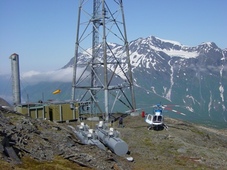
Weather was a constant challenge. Temperatures varied between plus
90 degrees in the summer to minus 70 degrees in the winter, although the
cut-off for flight operations on the Alyeska Pipeline Contract was minus 40 degrees. Waiting on personnel to complete work at the sites was the most boring part of the job. A good book was essential during the winter months when hiking wasn't an option. Once temperatures dropped below zero, the aircraft was started periodically to keep the oil and battery from freezing.
Although the aircraft and crew was assigned to a specific pump station, they supported other pump stations in the area. The Pump Station 5 helicopter and crew also supported the Yukon Response Base, while the Pump Station 4 helicopter supported Pump Stations 3, 2 and 1, and the Glennallen helicopter supported the Delta Response Base and Pump Stations 10 and 12.
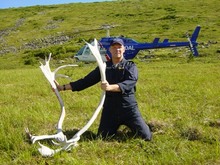
Flights between pump stations to pick up passengers were usually flown solo, providing some interesting excursions. Wildlife was more abundant in the area along the pipeline and picking up an occasional moose or caribou antler was a welcome diversion. Even when flying security missions, a break for lunch atop a picturesque mountain or stopping to spend an hour casting a fishing lure in a clear stream could be a nice change of routine.
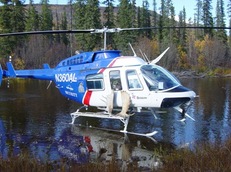
Flying was challenging at times, repetitive on occasion, but always enjoyable. Waiting on weather, passengers or an excuse to fly was the
hard part. Greg is now medically retired and spends his time researching
and writing aviation history. The many flights, adventures, co-workers and friends are fondly remembered.
hard part. Greg is now medically retired and spends his time researching
and writing aviation history. The many flights, adventures, co-workers and friends are fondly remembered.

